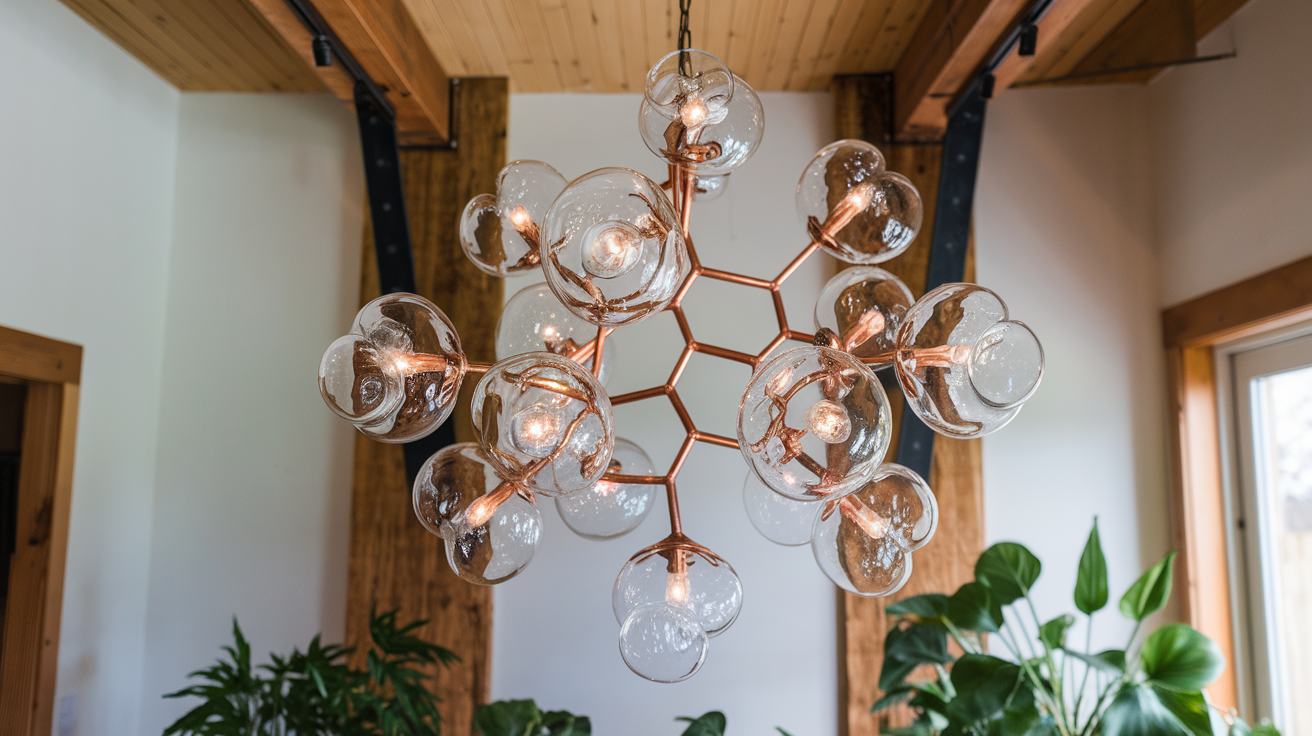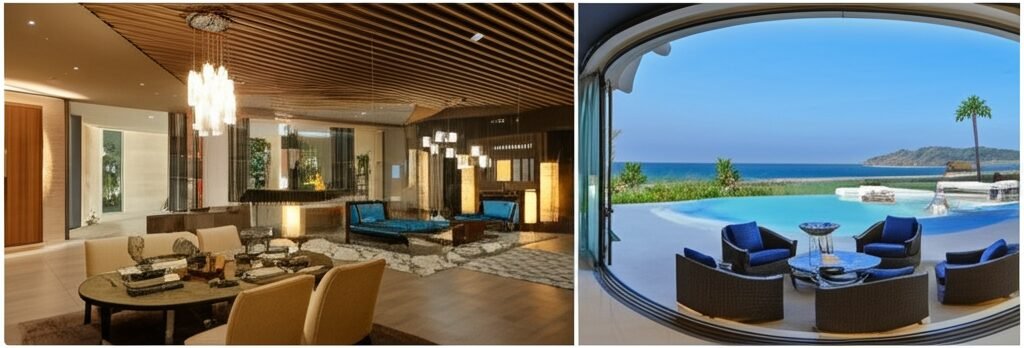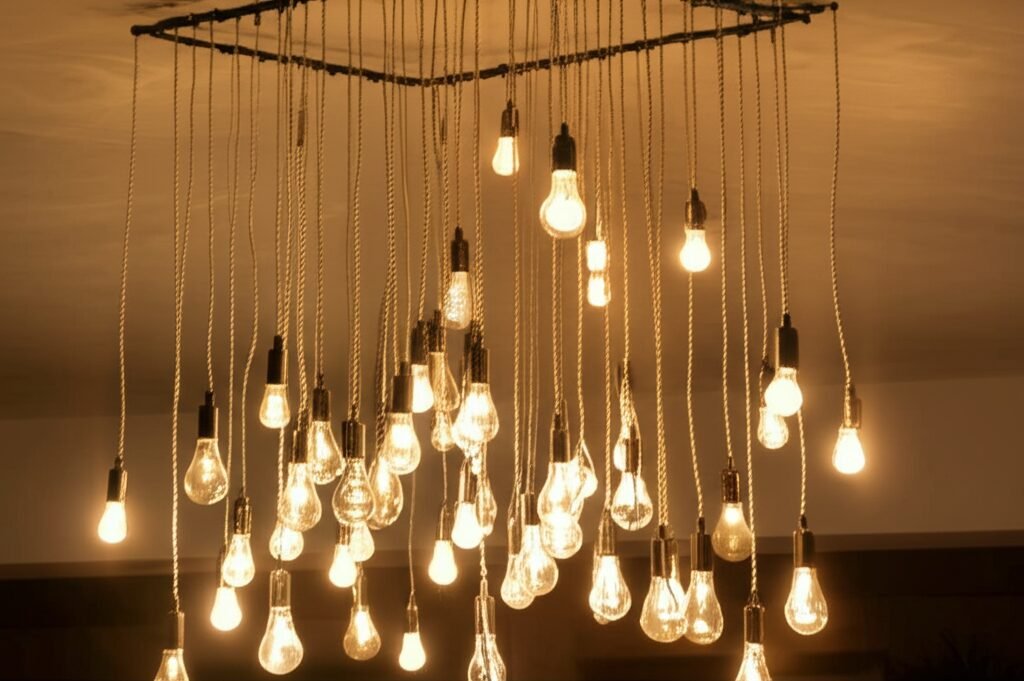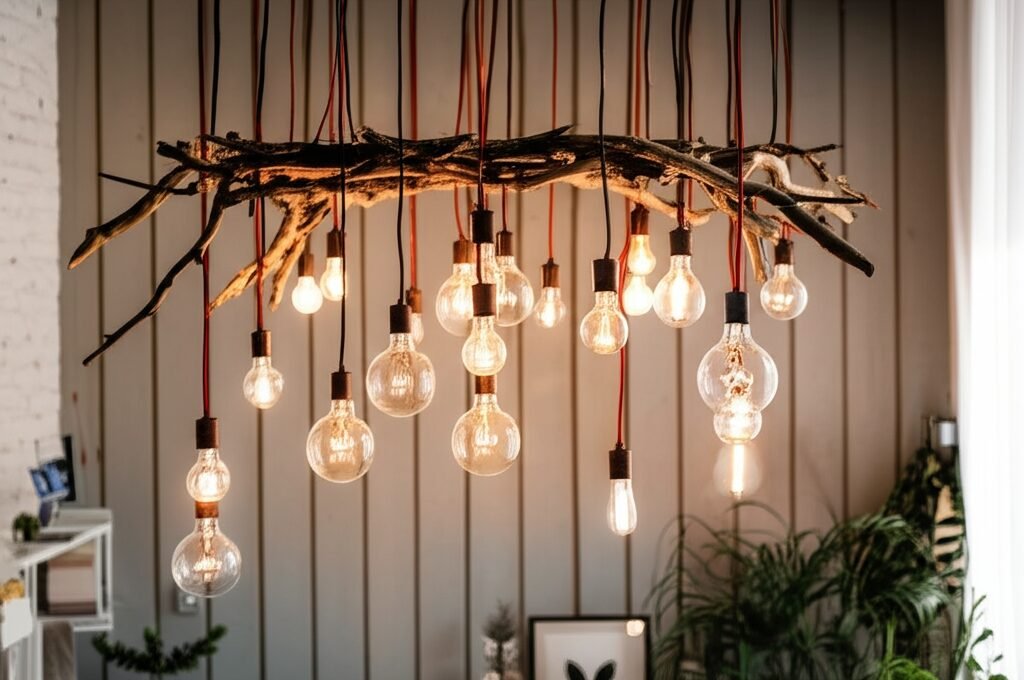Here’s what you gotta know about getting the best custom motorcycle race fairing with a light bar:
Key Takeaways
- Performance Boost: A good custom fairing ain’t just for show; it cuts through the air better, makin’ you faster and more stable.
- See and Be Seen: Integrated light bars are clutch for visibility, ‘specially in dodgy weather or endurance races. It’s about your safety and others too.
- Material Choice is Big: Carbon fiber, fiberglass, ABS plastic – they all got their pros and cons for weight, strength, and how much they’ll set ya back.
- Custom Fit is King: Off-the-shelf is okay, but custom means it’s built for your bike and your needs, including how that light bar sits.
- Aerodynamics Matter More Than You Think: The shape really does help with speed and can even keep your engine runnin’ cooler.
- Installation Needs Care: Whether you do it yourself or get a pro, fittin’ it right is key for safety and performance. Don’t want bits fallin’ off mid-corner, eh?
- Maintenance is Ongoing: Keep it clean, check for damage, and make sure them lights are always workin’ perfect.
Understanding the Core: What Makes a Custom Race Fairing “Ultimate”?
So, you’re lookin’ to get a custom race fairing with a light bar, eh? Good on ya. It’s a proper game changer for serious track riders. Stock fairings? They’re alright, do a job for the road, but when you’re pushin’ it on the track, you need somethin’ a bit more… specific. An “ultimate” fairing, well, it’s more than just a pretty piece of plastic or carbon. It’s gotta be designed with racing in mind, every curve, every vent. Aerodynamics are huge, massive. We ain’t just talkin’ about lookin’ sleek; we’re talkin’ about how the air flows over and around your bike. A good custom fairing reduces drag, which means more speed for the same power, and it can improve stability, ‘specially at high speeds or in crosswinds. My mate Jim, he slapped a cheap universal fairing on his R6, and it was wobblin’ all over the place down the main straight. Learned his lesson, he did.
Then there’s the light bar integration. This ain’t just about bolting on any old light. An ultimate fairing will have the light bar designed into it, or at least have a perfect spot for it. This means it’s not messin’ with the airflow, and it looks clean, like it’s meant to be there. Think about how important light is in other contexts; for instance, the way Artistic Glass Lighting for Villas: Selecting Themes for Villa Lighting can totally transform a space, making it feel grand or cozy. Well, on the track, that light bar is transforming your ability to see and be seen, especially if you’re into endurance racing or those twilight track days. It’s gotta be functional, bright, and tough. You don’t want somethin’ that’s gonna conk out after a few bumps. The overall design should also reflect a unique character, much like how different types of branch chandeliers can bring a nature-inspired elegance to a room, your fairing brings your bike’s personality to the forefront.
A unique design, whether in lighting or a custom fairing, really sets things apart.
The choice of materials, the precision of the fit, how it mounts to your specific bike model – all these little things add up. It’s not just one thing, it’s the whole package. An ultimate fairing is also about durability. Racing is hard on equipment. It needs to withstand vibration, potential offs (touch wood), and general wear and tear. And it should be repairable, ideally. Some of them fancy carbon ones look amazing but can be a nightmare to fix if they get a crack. So, “ultimate” means it performs, it’s integrated, it’s durable, and it fits your bike and your racin’ style like a glove. It’s a serious bit of kit, not just a cosmetic upgrade, though lookin’ good is a nice bonus, innit?
The Light Bar Integration: More Than Just Seeing, It’s About Being Seen
Right, let’s talk about these light bars on race fairings. Some folks might think, “Why bother? My stock headlight’s fine.” And for a Sunday trundle, maybe it is. But on a track, ‘specially if you’re doin’ anythin’ other than a quick sprint in broad daylight, a proper integrated light bar is a godsend. Think about endurance races that go through the night, or even just a track day where the weather turns sour and visibility drops. Your standard headlight, it’s designed for road rules, for not dazzling oncoming traffic. On a track, you need pure, unadulterated illumination. You need to see every inch of that tarmac, every apex, every ripple. And just as importantly, you need other riders to see you. It’s a massive safety thing.
The types of light bars you can get are pretty varied. LEDs are king now, obviously. They’re bright, don’t draw a crazy amount of power, and they’re tough. You’ll hear about lumens, which is just how much light they chuck out. More is generally better, but you also gotta consider the beam pattern. A “spot” beam throws light far down the track, good for seeing what’s comin’ up on a long straight. A “flood” beam spreads the light wider, good for corners and seein’ the edges of the track. Some bars even offer a combo. The impact of this kind of lighting is huge; it’s like how High-End Club Lighting Solutions: Event-Specific Lighting Solutions are designed to grab attention and define a space. Your light bar defines your presence and carves out your path on a dark or murky track. For bikes like Harleys, there are specific kits, like the Custom Dynamics LED Light Bar for Harley Road Glide, which shows how much thought goes into bike-specific lighting.
Just like event lighting commands attention, your fairing’s light bar ensures you’re seen on track.
One thing people often forget, or don’t think about, is regulations. Some race series or tracks have specific rules about auxiliary lighting. Might be restrictions on brightness, color, or even if you can use ’em at all during certain sessions. So, always check the rulebook before you go drilling holes in your expensive new fairing. And the integration itself, that’s where the “custom” part really shines. A well-designed fairing will have the light bar recessed or shrouded, so it doesn’t create aerodynamic drag. The wiring should be neat, protected, and easy to access if somethin’ goes wrong. It’s not just about slapping a light on; it’s about making it a seamless part of the bike’s performance package. It’s gotta look right, work right, and be tough enough for the job. I’ve seen setups where the light bar is so well integrated into a Harley Davidson Aggressor Series Softail Breakout Headlight Fairing, it looks like it came from the factory that way, only much, much brighter.
Material Matters: Choosing the Right Stuff for Your Fairing
When you’re gettin’ a custom race fairing, the material it’s made from is a massive deal. It affects everything: weight, strength, cost, and even how easy it is to fix if you have a bit of a spill. Let’s break down the common players, shall we? First up, fiberglass. This is kinda the old reliable, been used for ages. It’s relatively cheap to produce, pretty strong for its weight, and the big plus is that it’s fairly easy to repair. If you get a crack or a hole, a bit of resin and matting, some sanding, and you’re often good to go. Lots of club racers use fiberglass ’cause it balances performance and cost. The downside? It can be a bit heavier than other options, and maybe not as shatter-resistant in a big crash.
Then you got carbon fiber. Ah, carbon fiber. The dream material for many. It’s incredibly light and unbelievably strong. That’s why you see it all over MotoGP bikes and high-end race cars. The weight saving can genuinely make a difference to your bike’s handling and acceleration. It also looks trick, no denyin’ that. But, and it’s a big but, it’s expensive. Properly expensive. And repairing it? That’s a specialist job. It’s not like slapping some putty on it. A small crack can compromise the whole panel if not fixed right. My mate Dave, like I said, he had a tiny off, cracked his fancy carbon fairing, and the repair bill made his eyes water. He was wishin’ he’d stuck with good old glass then, I tell ya.
Choosing fairing materials is like balancing artistry and function in lighting; both need to perform and look good.
There’s also ABS plastic. This is what most OEM (original equipment manufacturer) fairings are made from. It’s tough, flexible, and pretty resistant to impacts. For a race fairing, it can be a good compromise. It’s usually lighter than fiberglass but not as light as carbon. It can take a knock, and some types are easier to plastic-weld or repair than you might think. The quality of race ABS fairings has gotten really good. The choice really comes down to your budget and what you’re prioritizing. If every gram counts and money’s no object, carbon fiber is the way. If you’re on a tighter budget or expect a few bumps and scrapes (and let’s be honest, that’s racing), fiberglass or high-quality ABS are excellent choices. The material choice must also complement the overall design and the integrated light bar, achieving a balance much like great Artistic Glass Lighting for Villas: Balancing Functionality and Artistry does in architecture. It’s gotta work together. You wouldn’t put a fragile, ornate light fixture in a high-traffic area, and you wouldn’t put a super-brittle fairing on a bike that’s likely to see a bit of rough and tumble without expecting consequences.
Design and Aerodynamics: Slicing Through the Air with Style and Purpose
The design of your race fairing, it’s not just about making your bike look like it means business, though that’s a nice perk, innit? It’s mostly about aerodynamics. How that fairing cuts through the air can make a real difference to your lap times and how stable the bike feels, ‘specially when you’re absolutely givin’ it the beans down the straight. A well-designed fairing reduces aerodynamic drag. Less drag means the engine doesn’t have to work as hard to push the bike through the air, so you can hit higher top speeds, or get to your top speed quicker. It can also mean you use a tiny bit less fuel, which might matter in an endurance race. Every little helps, as they say.
Then there’s stability. The shape of the fairing, including the screen, directs air around the rider and the bike. This can reduce buffeting, which makes for a less tiring ride and helps you stay focused. Some modern race fairings even incorporate winglets and other fancy aero bits, like you see on the top-level race bikes. These can generate downforce, pushin’ the bike onto the track for more grip in corners. It’s proper clever stuff. Of course, for most custom jobs, you’re not gonna have access to a multi-million-pound wind tunnel like the MotoGP teams. But good fabricators, they understand the principles. They know how to shape a fairing to work with the air, not against it. They’ll look at your bike, your riding position, and try to create somethin’ that’s optimized for you. Ventilation is another key part of the design. Your engine gets hot, real hot, when it’s working hard. The fairing needs to have strategically placed vents to allow cool air in to the radiator and to let hot air escape. Same for the rider, some airflow can keep you from cookin’ inside your leathers.
The aerodynamic lines of a fairing can set a ‘mood’ of speed and aggression, much like mood lighting techniques for clubs set a venue’s atmosphere.
And yeah, style does come into it. You want your bike to look good! Custom paint jobs, decals, making it uniquely yours – that’s all part of the fun. The light bar integration needs to be part of this design philosophy too. It shouldn’t look like an afterthought. A good custom fairing will have the light bar built-in, or at least have a mounting that’s sleek and doesn’t mess up the lines or the airflow. It’s all about creating a cohesive package, where every part works together, both functionally and aesthetically. It’s like how lighting designers use High-End Club Lighting Solutions: Mood Lighting Techniques for Clubs to create a specific atmosphere; the design of your fairing, with its lines and integrated light bar, creates an atmosphere of performance and intent. Companies like Monster Fairings offer a wide variety, showing how many different styles and aerodynamic approaches there can be.
The Customization Process: From Idea to Track-Ready Fairing
So, you’ve decided you need a custom race fairing with an integrated light bar. Brilliant. Now, how do you actually get one? Well, you’ve got a couple of main routes: find a specialist fabricator or, if you’re brave and skilled, consider some DIY elements, though a full fairing is a big job. Most folks will go to a professional, and that’s probably wise for somethin’ this important. Finding a good fabricator is key. Look for someone with experience with your type of bike, and ideally, experience with race applications. Ask to see examples of their work, talk to other racers. Word of mouth is often best.
Once you’ve found your person or company, the process usually starts with a discussion. What are you looking for? What kind of racing do you do? What’s your budget? They’ll need to know about your bike, any modifications it has. Then comes the design phase. This might involve sketches, CAD modeling if they’re really high-tech, or working from an existing mold that they can adapt. Mock-ups are super important. They might create a temporary version or use templates to make sure everything is going to fit perfectly before they start working with expensive materials. “Measure twice, cut once” is the old saying, and it really, really applies here. Misalignments can cause all sortss of problems, from poor aerodynamics to stress on the fairing itself. Integrating the light bar seamlessly is a big part of this stage. Where will it sit? How will it be mounted for strength and to avoid vibration? How will the wiring be routed cleanly and safely? These are all questions that need answers before the build starts. It’s a bit like when you’re planning a complex lighting setup; you need to avoid DIY Branch Chandeliers: Common Mistakes to Avoid by thinking through every step.
Just like avoiding mistakes in DIY lighting, careful planning is crucial in custom fairing fabrication to prevent issues down the line.
The actual fabrication process depends on the material. For fiberglass, it involves molds, laying up the glass cloth and resin, then curing, trimming, and finishing. Carbon fiber is a more complex process, often involving vacuum bagging or autoclave curing to get that ultimate strength and lightness. Patience is needed; this stuff can’t be rushed if you want a quality job. And throughout the process, communication with your fabricator is vital. Keep in touch, ask questions, make sure you’re both on the same page. It’s a collaborative effort to get that perfect piece. Some riders might source a base fairing from a place like Monster Fairings and then customize it further, perhaps by adding their own light bar mounts or aero tweaks, but getting the core fairing right is the foundation.
Installation Insights: Gettin’ Your New Fairing and Light Bar Fitted Right
Alright, so your beautiful new custom fairing, complete with its trick integrated light bar, has arrived. Exciting times! But the job ain’t done yet. Gettin’ it fitted to your bike properly is absolutely crucial. A poorly fitted fairing can be dangerous, ineffective, or just look plain pants. If you’re not confident with the spanners, this is another job for a professional. But if you’re reasonably handy, you might tackle it yourself. First things first, you’ll need a decent set of tools. Sockets, wrenches, Allen keys, screwdrivers, maybe a drill if you’re doing some final tweaks for brackets or wiring. And patience. Lots of patience.
The mounting points are super important. Your custom fairing should use the bike’s existing mounting points where possible, or have well-designed brackets that attach securely to the frame. Don’t go drilling extra holes in your frame unless you absolutely know what you’re doing! Everything needs to line up perfectly. Check for clearance around the forks, the handlebars (at full lock both ways!), the exhaust, and any other components. You don’t want your new fairing rubbin’ against anything or restricting movement. It’s gotta be solid, no wobbles or rattles. I once saw a bloke lose his fairing mid-session ’cause he’d only used half the bolts. Not pretty. The wiring for the light bar is another critical step. You’ll need to run wires from the light bar to a switch, and then to the bike’s electrical system. Use a relay if it’s a powerful light bar to avoid overloading your stock wiring or switch. Make sure all connections are secure, insulated, and protected from the elements and vibration. You don’t want wires chaffing or shorting out. That’s a recipe for disaster, or at least a dead battery when you least expect it. Think about the DIY Branch Chandeliers: Safety Tips for DIY Lighting; the same principles of electrical safety apply here, just on two wheels.
Electrical safety is paramount when installing a light bar, much like following safety tips for DIY lighting projects at home.
After everything’s bolted up and wired in, do a thorough safety check. Make sure all fasteners are tight. Test the light bar. Check the steering lock to lock. Give the fairing a good wiggle to ensure it’s secure. Maybe take it for a gentle test ride around the paddock before you hit the track at full chat. Some specific lighting kits, like the Custom Dynamics LED Light Bar for Harley Road Glide (2015-2024) or the more general Performance LED Headlight Kit for Road Glide Motorcycles, often come with detailed instructions because the manufacturers know how important correct installation is. Follow ’em! It’s worth takin’ your time to get it right. A properly installed fairing and light bar will perform better, last longer, and keep you safer.
Enhancing Safety and Performance on the Track: Real-World Benefits
So, we’ve talked about materials, design, and getting it all fitted. But what are the actual, real-world benefits of a top-notch custom race fairing with an integrated light bar when you’re out on the track? Well, they’re pretty significant, let me tell ya. First and foremost, let’s talk visibility, especially with that light bar. If you’re doing any kind of night racing, endurance events, or even just track days that run late into the evening or start super early, that light bar is your best friend. It cuts through the darkness, helps you pick out your braking markers, spot imperfections on the track surface, and generally see where the heck you’re going. Stock headlights just don’t have the punch for serious track speeds in low light.
But it’s not just about you seeing. It’s also about other racers seeing you. A bright, well-placed light bar makes you much more conspicuous on a crowded track, especially in spray or dusty conditions. This is a massive safety plus. I remember one 24-hour race I did years ago, the fog rolled in something awful ’round 3 AM. Our bike had a decent custom light bar setup, and it was a lifesaver. We could pick our way through, and other, less well-lit bikes, well, they were struggling, and frankly, a bit scary to be around. Our setup lit up our patch of track almost like how High-End Club Lighting Solutions: Creating VIP Areas with Custom Lighting make a specific zone stand out with focused illumination. It really defined our presence and path.
A good light bar makes you stand out on track, much like dedicated lighting creates distinct VIP areas in clubs.
Then there’s the performance aspect from the fairing itself. Better aerodynamics mean less wind resistance. This can translate to higher top speeds on the straights and potentially quicker lap times. It also means improved stability, especially at high speed or when you’re leaned over in a fast corner. The bike just feels more planted. And don’t underestimate rider comfort. A well-designed race fairing offers much better wind protection than a stock unit, or certainly a naked bike. This reduces rider fatigue, especially over longer races or full track days. Less fatigue means you can concentrate better, make better decisions, and ride safer for longer. It all adds up. It’s an investment, sure, but the gains in safety, confidence, and potentially performance, they’re well worth it for any serious track rider. It’s not just about looking the part; it’s about giving yourself every advantage.
Maintaining Your Custom Fairing and Light Bar: Longevity and Care
Got your awesome custom fairing and light bar all set up? Sweet. Now, you gotta look after it if you want it to last and keep performin’ at its best. Racing is tough on bikes and all their bits, so a bit of regular TLC is essential. First up, cleaning. After every track session, give your fairing a good clean. Different materials need slightly different care. For fiberglass and painted surfaces, a gentle bike wash and a soft cloth will usually do the trick. Avoid harsh chemicals that could damage the paint or the gel coat. If you’ve got raw carbon fiber, it’s pretty tough, but again, gentle cleaning is best. Make sure to get all the bugs, rubber marks, and general track grime off.
While you’re cleaning, that’s the perfect time to inspect for any damage. Look closely for stress cracks, especially around mounting points or areas that might have taken a knock. Check for any chips, scratches, or delamination if it’s carbon fiber. Catching small issues early can prevent them from turning into big, expensive problems. If you do find a crack in your fiberglass, get it repaired sooner rather than later. Vibration and stress can make it spread. For the light bar, keep the lens clean. A dirty lens will reduce its effectiveness significantly. Check that it’s still securely mounted and that the wiring connections are all tight and corrosion-free. A bit of dielectric grease on electrical connectors can help keep moisture out. It’s this kind of proactive care, similar to how one might approach a unique home project by learning from DIY Branch Chandeliers: Creative Upcycling Ideas to maintain or repurpose items, that extends the life of your gear.
Thinking creatively about fairing maintenance and minor repairs can be like upcycling ideas for DIY chandeliers, extending its life and function.
Storage is also important. If your bike’s going to be laid up for a while, try to store it in a way that doesn’t put stress on the fairing. Avoid leaning things against it. If you take the fairing off, store it carefully, perhaps wrapped in a soft cloth, somewhere it won’t get knocked about or exposed to extreme temperatures. Some riders even get into making their own small brackets or custom mounts for accessories, a bit like a home crafter following a DIY Branch Chandeliers: Step-by-Step Guide to Building Your Own to create something specific for their needs. That same attention to detail can go into maintaining custom mounts for your light bar or other fairing accessories. Regular checks, prompt repairs, and sensible care will keep your custom fairing and light bar looking good and doing their job for many seasons of racing.
Attention to detail in maintaining fairing components is key, much like following a detailed guide for a DIY project.
Frequently Asked Questions (FAQs)
Q1: What’s the main advantage of a custom race fairing over a stock one?
A1: Custom race fairings are usually lighter, offer better aerodynamics for improved speed and stability, and are designed specifically for track use. They often provide better engine cooling and can be made from materials like carbon fiber or race-spec fiberglass for higher performance and durability under race conditions. Plus, they can be tailored to integrate things like light bars more effectively.
Q2: Why would I need a light bar on a race motorcycle?
A2: Light bars are super useful for endurance racing that runs into the night, 24-hour races, or even just track days with poor visibility due to weather (rain, fog) or time of day (dusk/dawn). They significantly improve your ability to see the track and, just as importantly, help other racers see you, which is a big safety boost.
Q3: What are the common materials for custom race fairings, and which is best?
A3: Common materials include fiberglass, carbon fiber, and ABS plastic.
- Fiberglass: Good balance of strength, repairability, and cost. A bit heavier.
- Carbon Fiber: Very light and very strong, but expensive and harder to repair.
- ABS Plastic: Durable and flexible, often used for OEM fairings, can be a good mid-range option.
The “best” depends on your budget and priorities. Carbon for ultimate lightweight performance, fiberglass for cost-effective track use.
Q4: Can I install a custom fairing and light bar myself?
A4: If you’re mechanically skilled and have the right tools, yes, it’s possible. However, proper fitment is critical for aerodynamics, safety, and to prevent damage. Wiring the light bar also requires some electrical knowledge. If you’re unsure, it’s always best to have it professionally installed. It ain’t worth stuff fallin’ off at 100mph.
Q5: How much does a custom race fairing with an integrated light bar typically cost?
A5: Prices vary massively, mate. Depends on the material (carbon fiber is way pricier than fiberglass), the complexity of the design, the make and model of your bike, the quality of the light bar, and whether it’s a fully bespoke one-off or a semi-custom kit. Could be a few hundred quid for a basic setup to several thousand for top-tier carbon fiber with a high-end light system.
Q6: Are there any regulations for using light bars on track?
A6: Yes, quite possibly. Different race series, track day organizers, and even specific tracks can have their own rules regarding auxiliary lighting – brightness, colour, when they can be used, etc. Always check the specific regulations for any event you’re entering to avoid any dramas.
Q7: How do I maintain my custom fairing and light bar?
A7: Regular cleaning is key. Inspect for cracks or damage after each outing, especially around mounting points. Keep the light bar lens clean and check wiring connections. Promptly repair any damage to fiberglass or carbon fiber to prevent it from worsening. Store properly to avoid warping or accidental damage.
















